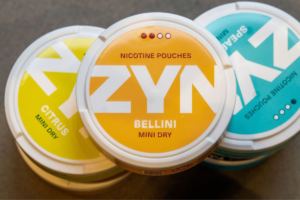For centuries, snus has been a tobacco product from Sweden. Snus is different from cigarettes because it is not smoked; rather, people put it under their upper lip for long periods of time. Many companies sell this smokeless tobacco as being less harmful than smoking because there is no burning involved and therefore no smoke inhaled thereafter. Nevertheless, there are many health problems connected with using snus which need to be thoroughly studied. Numerous scientific investigations have been carried out into the effects of snus on oral health such as an increased risk of gum recession and tooth loss as well as its link to various cancers and cardiovascular diseases too. The consumption of nicotine and other potentially dangerous chemicals by individuals who use snus presents more risks than those associated with smoking even though it is believed that they pose lower hazards; hence detailed health warnings should be given together with close regulatory monitoring.
What is Snus and How is it Used?
Snus Knowledge: A Smokeless Tobacco Product
Snus is a wet smokeless tobacco product that is ground fine and usually packed in small teabag-like pouches. These are placed under the upper lip so that nicotine and other substances can be taken in through the lining of the mouth. Snus does not have to be burnt or have smoke inhaled, unlike many other tobacco products. Moisture content, nicotine levels, and absence of combustion products are some key parameters which differentiate snus from other types of tobacco.
Cultural Relevance Of Swedish Snus
Swedish snus has deep cultural roots dating back to the early 19th century where it was not just seen as any ordinary form of smoking but rather an embodiment off Scandinavian culture itself hence becoming one among its most cherished traditions over time. It should therefore not surprise anyone if they find out that this particular brand occupies such a big place within social events or gatherings because besides being seen as a symbol for friendship among people who share common values such also serve as important aspects in Swedish lifestyle patterns..etc.Given these points one may argue that even though there might exist certain risks linked with using this kind of stuff regularly still we cannot ignore its significance especially when viewed within broader historical contexts like ours.
Comparing Snus With Other Types Of Tobacco Products
There are several things which need to be taken into account while comparing snus against different forms of tobacco:
- Method Used: Unlike cigarettes or cigars, snuff is consumed orally without burning.
- Hazards Involved: All kinds of tobaccos poses health dangers but each type has unique risk factors due to methods used during their consumption i.e., smoking leads mostly lung cancer whereas chewable dip causes oral cavity problems including lips, teeth etcetera; however it should also noted that chewing could result throat related cancers too along side mouth ones.
- Amount & Speed Of Nicotine Delivery: Although both contain addictive substance known as nicotine, amounts delivered may vary because smoking introduces larger quantities into bloodstream faster than chewing thus leading to intense craving within shorter period.
- How Society Perceives Them: People view snuffs differently based on various factors like culture background or public health policies adopted by different countries over time where some societies might consider them safe alternatives while others ban their sale altogether due to adverse effects associated with long-term usage among citizens etcetera.
These parameters reveal more about snuff in relation to other tobacco products thereby underscoring its exclusive position within Swedish society but also worldwide debates concerning harm reduction strategies for smokers everywhere.
Health Risks Associated with Snus Use
Can Snus Cause Cancer?
There has been much research done on snus and its effects on health. One of the biggest concerns with this product is whether or not it can cause cancer. Studies have shown that people who use snus may be at a higher risk for certain types of cancers like mouth and pancreas cancer. However, these risks are different from those associated with smoking because there is no burning or inhaling smoke involved in using snuff. Though tobacco-specific nitrosamines (TSNAs) which are known carcinogens found in all forms of tobacco products including chewable ones like snus are greatly reduced – though not completely absent – when compared to smoked tobacco, some level still remains indicative that even if less than cigarettes; it may still pose some dangers.
Public Health Impacts of Nicotine in Snus
Nicotine is an addictive substance present within many types of tobacco including dipping tobacco such as snuff as well as other smokeless varieties like chewing plugs and leaves mixed with lime or ashes known traditionally by the name ‘snus’. Its impact on public health can be seen through three main aspects:
- Addiction Potential: Nicotine causes physical dependence which makes people continue using it even when they want to quit smoking altogether hence this poses significant threats towards public wellbeing since most individuals might maintain consumption either through taking snuffs themselves directly into their mouths or via means involving oral cavity manipulation.
- Youth Initiation: Snus are easily accessible especially among young people who perceive them relatively safe compared to cigarettes thereby creating new cohorts of nicotine addicts among our future leaders thus jeopardizing long term goals aimed at achieving sustainable development.
- Harm Reduction: For current smokers looking for ways to cut down risks associated with cigarette smoking without necessarily quitting altogether; switching over from traditional cigarettes onto smokeless alternatives such as Swedish match’s portion-packed moist powdered tobacco called “snuss” could help but it does not eliminate all potential negative consequences related to health.
- Dual Use: There is concern that some individuals may use snuff while still smoking cigarettes thereby increasing overall consumption levels which can put them at higher susceptibility towards getting tobacco-related illnesses like cancer among others hence this calls for urgent action by relevant authorities in charge of regulating these products within different jurisdictions worldwide.
In conclusion, the risks and benefits of snus vary from those posed by smoking tobacco but its impact on public health particularly with regards to cancer risk and nicotine addiction needs careful thought. Contextualized interventions are needed so that we do not only reduce harm among current smokers but also prevent new initiations while lowering general dependence on all forms of tobacco.
Can Snus be a Safer Alternative to Smoking?
The suggestion of using snus as a method of quitting smoking necessitates a thorough evaluation of its comparative effectiveness and hazards versus conventional tobacco use. It is important to consider this comparison from many different angles from the point of view of health:
- Less Chemical Exposure: The main reason why it is considered better to replace cigarettes with snus lies in significantly lower amounts of dangerous substances produced by combustion. Unlike snus, which doesn’t imply burning tobacco so no tar or carbon monoxide are emitted – two leading causes for smoking-related diseases.
- Delivery Of Nicotine: Both snus and cigarettes supply human organism with nicotine – the substance that makes people addicted to tobacco. However, various risks connected with cardiovascular system or addiction (which can be caused by itself but also due to other factors) are associated only with pure nicotine intake because there is no carcinogen entering bloodstream through non-combustion way such as in case of smokeless alternatives like this one. This makes delivery less harmful for human bodies if compared with traditional methods.
- Cancer Hazards: When an individual switches from heating up plants till they burn completely towards keeping them warm until they release necessary amount heat using electricity powered systems called heaters; cancer risk reduces greatly especially lung tumors caused mainly by inhaling fumes from burnt organic matter (cigarette smoke). Nevertheless, it should be taken into account that usage may lead rather than eliminate pancreatic cancers among others although generally less dangerous than smoking.
- Heart Illnesses: Smoking as well as chewing have been found out to increase chances of getting heart diseases though there are significantly more probabilities when you smoke than chew. Such difference shows potentiality behind reducing harm even though not without danger entirely thus still being able to serve like this alternative.
- Dependence And Giving Up Smoking: Ability to quit largely depends on how addictive something is and snusses does not lack nicotine that causes addiction hence making them rather ineffective aids in giving up smoking for good while many may be helped by switching over from one habit-forming product to another thus lowering their health risks but staying hooked on nicotine.
To sum up, snus could be used instead of smoking in order to decrease exposure towards specific hazardous chemicals and associated health risks thereby representing a potential strategy for harm reduction. However, continued risk factors such as nicotine addiction coupled with elevated chances of certain cancers or even heart attacks suggests that overall quitting should remain the most important goal among different cessation programs designed by public health authorities so as people can stop using all products containing tobacco completely including those which are not safe substitutes according WHO (World Health Organization).
Effect of Nicotine in Snus on the Body
Understanding Nicotine Addiction with the Help of Snus
Nicotine addiction is a complex problem associated with products like snus because they contain nicotine, a highly addictive substance. When a person uses snus, nicotine enters the blood rapidly through the mouth lining. This triggers certain parts of the brain that release dopamine – which is known as a “feel good” neurotransmitter – into synapses where it can bind to receptors on other neurons. Over time, these areas become reliant on external stimuli such as drugs in order for them to be activated thereby establishing an individual’s dependence upon them. There are several components contributing towards snus-induced nicotinic addiction:
- Frequency: The frequency at which one indulges in this activity determines how fast he or she gets hooked onto it.
- Amount: Different types have different levels of nicotine content; hence if people go for those with higher amounts then chances are that they might get addicted much quicker than expected.
- Genes: Some individuals could be having genetic predispositions making them more vulnerable to becoming dependent upon substances containing nicotine..
- Psychology: People suffering from anxiety disorders or depression may use smokeless tobacco products like chewable tobacco or snuff as self-medication tools against their emotional problems thus increasing their risks for getting addicted.
Snus and Cardiovascular dangers
Compared to cigarette smoke, Swedish moist snuff has lower levels of certain harmful chemicals but still poses some serious threats especially when it comes down to heart health matters. These include:
- Stimulant effect: Adrenaline is released into the blood stream by adrenal glands due to stimulation caused by noradrenaline resulting from nictoine intake thus leading increased rate at which hearts beat per minute (HR).
- Temporary rise in blood pressure: Nicotine found within this kind of product also acts directly on vessels causing them narrow temporarily raising BP before returning back normal limits again
- Atherosclerosis risk: Long-term use may contribute towards development of atheromatous plaques along arterial walls thereby narrowing these blood vessels thereby reducing supply of oxygenated blood to various parts leading to ischemia
- Myocardial infarction and stroke: The combination of increased HR, high BP along with potential occurrence atheroma formation puts patient an extremely vulnerable position where he or she could suffer from MI (heart attack) or cerebrovascular accident (stroke).
To sum up, although some may consider snus being less harmful than cigarettes, it still carries certain health threats. It is important that we recognize nicotine dependence as serious problem and take into account all possible implications associated with tobacco product consumption. Public health policies should encourage quitting assistance programs while informing people about broader hazards related to any form of tobacco use including e-cigarettes.
The Public Health Debate on Snus
Complexities of Snus on Public Health in Sweden
The debate on snus has taken a public health perspective, mostly in Sweden. The issue is about harm reduction as opposed to health risks mitigation. Reports from the country show that diseases related to smoking are less common there and this can be partly attributed to snus as a substitute for cigarettes; however these facts have significant implications for global public health policy on smokeless tobacco.
Swedish Snus and Public Health in Sweden
Sweden has had high levels of snuff consumption for many years which has been credited with its relatively low rates of lung cancer and other smoking-related illness compared with neighboring states in Europe. This so called ‘Swedish Experience’ suggests that it could work as an approach to reducing harm caused by smoking among some or all smokers who would not otherwise quit but should we also consider those risks entailed by using this product such as heart diseases or nicotine addiction?
Global Perspectives on Snus and Smokeless Tobacco Regulation
There are various regulations around the world concerning different types of smoke free tobacco like nasal or oral snuffs including:
- European Union (EU): EU law prohibits sales throughout member countries except Sweden because they fear people may start through it then proceed into smoking; particularly among youth where it’s believed to act as a gateway drug.
- United States: FDA oversees these products under their jurisdiction over cigarettes etc., thus requiring any claim about risks associated with them should be backed up by scientific evidence while acknowledging people need freedom too choose what affects them most based on available information.
- Other Countries: Some nations totally ban while others allow controlled sale depending on how much risk each sees posed towards health; hence harm reduction varies globally.
Such differences highlight why strong regulatory systems need constant updating following new discoveries regarding hazards involved alongside benefits realized from using such substances. Also underscores continuous investigations into long term outcomes related to snuff use together with accurate public awareness campaigns that differentiate between dangers associated with cigarette smoking vis-à-vis snus.
Future of Snus: Regulation and Research Needs
Improvements in Investigation into the Health Effects of Snus
Studies regarding the consequences of snus on health continue to change thus giving necessary information for regulation and public health advice. Here are some areas that have been improved upon:
- Epidemiological Studies: These studies are crucial in understanding the long-term health outcomes of snus users compared to smokers and non-tobacco users. They focus on incidences such as cardiovascular diseases, oral cancers, and other tobacco-related conditions.
- Research on Nicotine Addiction: It is important to investigate about how snus use affects nicotine dependence. This includes looking at whether or not Snus can act as a gateway drug leading people into smoking or using other forms of nicotine especially among young people.
- Comparative Risk Analysis: Comparative studies that evaluate the health risks of snus vis-à-vis conventional cigarettes and other nicotine delivery systems. These findings help us understand its place in harm reduction strategies.
- Behavioral Research: Describing patterns of snuff consumption and their relationship with socio-demographic factors. Also exploring why individuals prefer using this product over others and what do people think concerning its risk to the public.
Navigating through Laws Governing Snuff Use
The rules governing the use of smokeless tobacco products like snuff vary greatly from one jurisdiction to another thereby affecting availability as well as consumer knowledge about them. Below are some key elements:
- Classification of Products: The way we categorize these items (e.g., modified risk or regular) determines how they should be controlled, marketed, or taxed.
- Marketing Restrictions: Regulations may limit where, when, and how often ads can appear; also packaging materials must meet certain standards because they influence consumers’ perception towards harm associated with them.
- Access & Sales Regulation: To prevent youth access governments need enforce strict policies on age restrictions for selling such products in different places like schools, shops etc.; they should also ban online sales completely since it’s difficult monitor who buys what from where.
- Health Claims & Labeling: Different regions have different requirements when it comes to health warnings on packages or ability claim reduced risk. This affects how people perceive these items and their use levels them too.
Treaties & Agreements: Participating in international conventions like WHO FCTC can shape national approaches towards snuff regulation.
References
1. “Health Risks of Smokeless Tobacco” – American Cancer Society
- Source: American Cancer Society
- Summary: This article from the American Cancer Society provides a comprehensive overview of the health risks associated with smokeless tobacco, including snus. It highlights that the most harmful cancer-causing substances in smokeless tobacco are tobacco-specific nitrosamines (TSNAs). The article is valuable due to its detailed explanation of how these substances contribute to cancer risk and the credibility of the American Cancer Society as a leading cancer research and advocacy organization.
2. “Snus: a compelling harm reduction alternative to cigarettes” – Harm Reduction Journal
- Source: Harm Reduction Journal
- Summary: Published in the Harm Reduction Journal, this peer-reviewed article examines the epidemiology relating to the use of snus and compares its health impacts to those of smoking cigarettes. The study suggests that snus is substantially less harmful to health than smoking. This source is particularly relevant for readers interested in understanding the potential of snus as a harm-reduction strategy. Its strength lies in the scientific rigor of the research and the journal’s focus on harm-reduction approaches.
3. “Is snuff safer than smoking?” – Harvard Health Blog
- Source: Harvard Health Blog
- Summary: This blog post by Harvard Health Publishing provides a nuanced discussion on the comparative risks of snus versus smoking. It addresses both the potential health risks of snus and the “ick” factors, such as bad breath and the need to spit out tobacco juice. The credibility of Harvard Health Publishing and the article’s balanced examination of the topic makes it a valuable resource for individuals seeking a well-rounded perspective on snus use.
Frequently Asked Questions
Q: Is snus terrible for your health?
A: While snus is considered less harmful than smoking cigarettes, it is not entirely risk-free. It has been associated with an increased risk of specific health issues like heart disease.
Q: What is the effect of snus on tobacco users?
A: Snus provides users with nicotine, similar to cigarettes, but without the harmful effects of tobacco smoke. However, it can still lead to addiction and other health concerns.
Q: Can snus help in quitting smoking?
A: Some studies suggest that snus can be used as a nicotine replacement to help smokers quit smoking. However, more research is needed to determine its effectiveness in smoking cessation.
Q: What is the association between snus use and health risks?
A: Research has shown a possible link between high consumption of snus and increased health risks, especially regarding heart disease. Users of snus should be aware of these potential risks.
Q: Are former snus users still at risk for health issues?
A: Even former snus users may still face health risks associated with their past use. Individuals need to understand the potential long-term effects of snus consumption.
Q: What do studies say about the effects of snus compared to smoking cigarettes?
A: Studies have suggested that snus use may be less harmful than smoking cigarettes, but it is not without risks. Users must be informed about the health implications of both products.
Recommended Reading :Snus Vs Snuff














